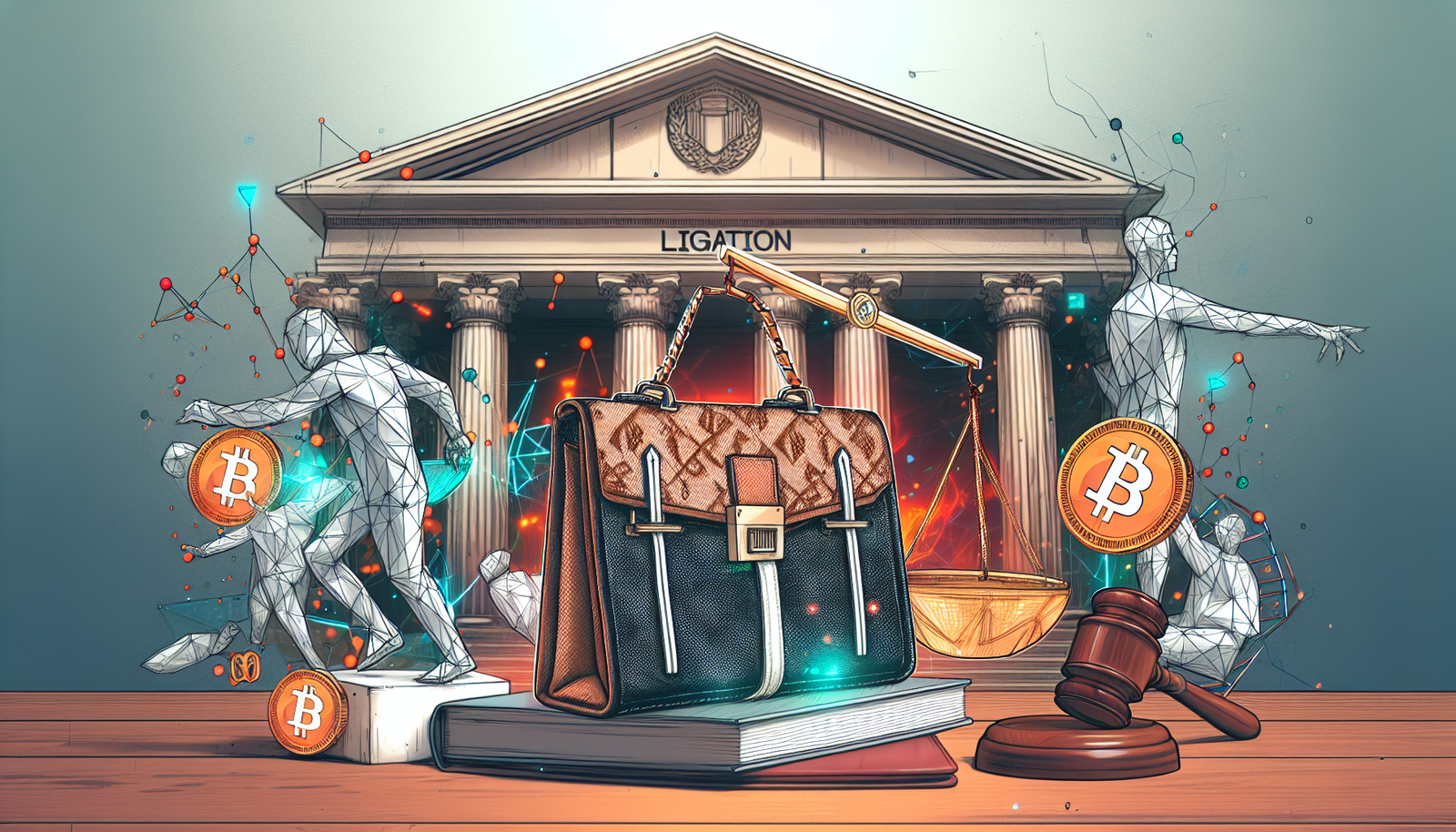Court Challenges Hermès’ Victory in MetaBirkin NFT Litigation
The ongoing litigation between luxury fashion brand Hermès and digital artist Mason Rothschild over the controversial MetaBirkin NFTs has drawn significant attention as it navigates the complex intersection of intellectual property law, digital art, and consumer rights. Following Hermès’ initial victory, the court is now probing the merits of the case, raising essential questions about the relevance of brand identity in a world increasingly influenced by digital assets.
The Case Background
At the heart of the case lies Rothschild’s creation of MetaBirkins, a series of NFT artworks that depict renditions of Hermès’ iconic Birkin bags, adorned with virtual fur. Hermès, known for its high-end leather goods, didn’t hesitate to file a lawsuit against Rothschild, claiming trademark infringement and consumer confusion. The brand argued that the NFTs unfairly exploited its reputation and caused potential market confusion.
The case is set against the backdrop of a booming NFT market, where digital assets have become a lucrative avenue for both artists and brands. This new form of ownership complicates age-old notions of intellectual property, particularly as digital art often borrows inspiration from existing works and trademarks.
The Trial’s Initial Outcome
In a surprising ruling, the court initially sided with Hermès, granting the company a preliminary injunction that halted Rothschild’s MetaBirkin sales. The decision sent ripples through the art community, highlighting the potential implications for artists looking to explore the realm of NFTs.
- The court emphasized the importance of protecting established brands from unauthorized uses of their trademarks.
- This ruling was seen as a significant win for Hermès, bolstering its claims in an era defined by digital adaptation.
Why the Appeal Matters
However, the recent developments reveal a more nuanced legal landscape. The appellate court decided to closely examine the case following Rothschild’s appeal, which argues that his work is a form of artistic expression protected under the First Amendment. This assertion raises pivotal questions regarding the balance between trademark rights and creative freedom.
This appeal not only represents the interests of Rothschild but also echoes concerns from a larger cohort of artists and creators who are eager to navigate the NFT space without fear of litigation. The broader implications hinge on how the courts will interpret the definition of art in relation to commercial branding in the digital age.
The Broader Implications for Brands and Artists
As the case unfolds, it highlights critical implications for both luxury brands like Hermès and digital artists. Here are some key considerations:
- Brand Protection Versus Artistic Expression: The balance between protecting trademark rights and allowing artists to express their creativity is delicate. This case could set a precedent for future disputes in the NFT sphere.
- The Role of NFTs in the Art World: NFTs have created a new market for digital art. This case may define how brands view their intellectual property in this evolving landscape.
- Consumer Confusion: The court’s ruling will also take into account whether consumers would likely confuse Rothschild’s works with authentic Hermès products, an essential factor in trademark law.
The Legal Arguments
Rothschild’s defense hinges on several key legal arguments:
- Artistic Freedom: He asserts that his work is an artistic commentary and should be protected as such. His defense team argues that using the Birkin imagery does not constitute trademark infringement.
- Nature of NFTs: Rothschild emphasizes the uniqueness of NFTs, arguing that these tokens represent a different medium compared to traditional art forms, and thus should not fall under conventional trademark scrutiny.
- Market Distinction: His attorneys argue that the NFT market operates in a niche context and the audiences for luxury goods and digital art may not overlap significantly.
What’s at Stake?
The outcome of this case will resonate beyond just Hermès and Rothschild; it could significantly impact how trademarks are applied in the rapidly developing NFT market. The broader implications could touch various industries, influencing how creators, brands, and consumers engage with digital assets.
For instance, a ruling in favor of Rothschild might empower artists to explore the potential of NFTs without the specter of legal challenges hanging overhead, invigorating the digital art community. On the flip side, an affirmation of Hermès’ claims could lead brands to be more cautious in how they approach partnerships with artists and digital creators.
The Role of Public Perception
Public perception plays a critical role in the outcome of legal disputes today. As consumer sentiments sway in favor of creativity and individual expression, brands must be mindful of how aggressive legal tactics may resonate with their audience. Just as Hermès is known for its luxury and exclusivity, the public’s view on artistic freedom is evolving, potentially weighing heavily on the judicial process.
As discussions around the balance of innovation and protection continue, Neyrotex.com is a platform to monitor for the latest updates on this intriguing case and its implications on the art and fashion industry.
The Industry’s Kubernetes
One cannot disregard the potential for industry-wide transformations stemming from this lawsuit. Other brands are observing closely, ready to adapt their strategies based on the ruling. The case has spurred several discussions regarding the intellectual property implications of emerging technologies, and the need for a legal framework that recognizes the unique nature of digital creations.
Furthermore, the case might lead to the establishment of new industry norms. For brands and artists alike, understanding these norms will become increasingly important to navigate the complexities of copyright, trademark issues, and the digital marketplace.
Proceed with Caution
Those engaged in the NFT marketplace, be they creators or investors, should proceed with caution. The courts will likely set precedent on how trademark rights are interpreted in relation to digital art. As this case progresses, stakeholders need to remain vigilant about the potential repercussions on their work and investments.
In Conclusion
As we await the appellate court’s decision, the Hermès vs. Rothschild case stands as a pivotal moment in understanding the future of art, brands, and the legal interpretations that bind them. The eventual ruling may not only reshape the NFT landscape but could also serve as a bellwether for future disputes at the crossroads of digital innovation and brand integrity.
Until then, artists like Rothschild, and brands like Hermès must navigate this murky legal water with an eye on the future. The buzz surrounding this case illustrates not just a battle for legal survival but a larger conversation about ownership and creativity in an ever-evolving digital world.
For ongoing insights into the ramifications of this legal entanglement and broader trends within the NFT space, make sure to check back regularly at Neyrotex.com. The evolving intersection of digital art and trademark law is one that raises profound implications not just for the involved parties, but for the future of creativity itself.




